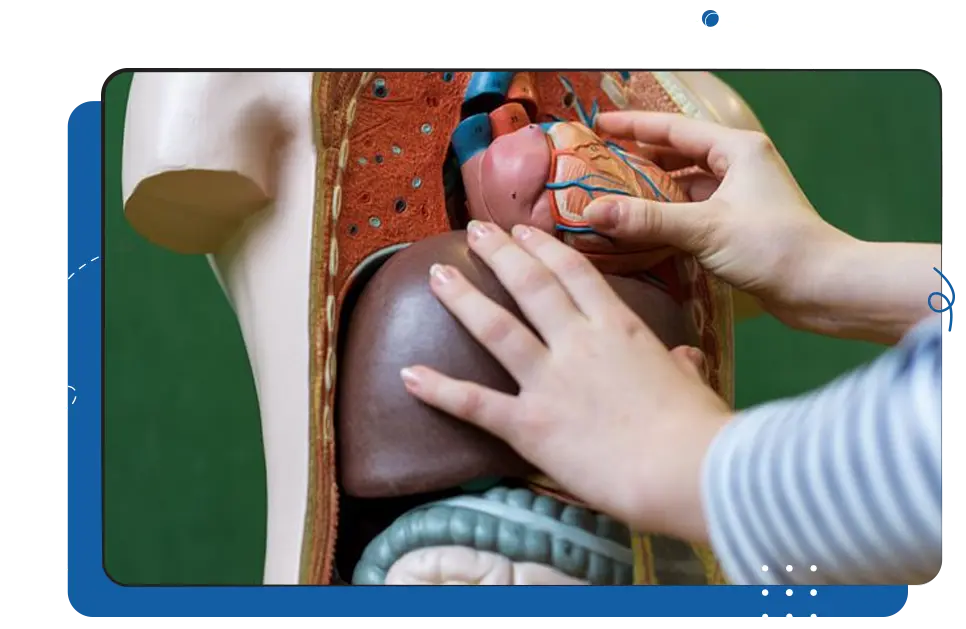CTE Curriculum
Prepare learners with CTE curriculum aligned to industry standards.
About the Course
The Anatomy & Physiology course is designed specifically with high school students in mind. To provide students with a base knowledge of scientific principles related to the field of Anatomy & Physiology, lessons focusing on common lab safety procedures, experimental design, methods for analyzing data, and more are included. Students in Anatomy & Physiology will explore a variety of topics, including the structure and function of the human body and the interaction of body systems for maintaining homeostasis.
SAMPLE LESSON
Human Physiology: Muscular System
Each lesson includes media-rich presentations, a pre-made lesson plan, assessments and engaging real-world projects and activities. To get an idea of what iCEV offers, explore the sample lesson and resources below.
Lesson Resources:
Lessons Available in This Course
- English Applications
- Science Explained: Anatomy & Physiology
- Tools & Equipment in Anatomy & Physiology
- Analyzing Data: Anatomy & Physiology
- The Human Body
- Emerging Technologies: Science & Medicine
- Human Physiology: Nervous System
- Human Physiology: Skeletal System
- Human Physiology: Muscular System
- Human Physiology: Integumentary System
- Human Physiology: Cardiovascular System
- Human Physiology: Respiratory System
- Human Physiology: Digestive System
- Human Physiology: Urinary System
- Human Physiology: Endocrine System
- Lymphatic System: Blood Typing
- Human Anatomy: Reproductive System
- Reproductive System: Embryological Development
- STEM Careers: Anatomy & Physiology
- Impact of Science: Anatomy & Physiology
- Experimental Design: Anatomy & Physiology
- Communicating Findings in Anatomy & Physiology
- Understanding Homeostasis
- Human Anatomy: Nervous System
- Human Diseases & Disorders: Nervous System
- Human Diseases & Disorders: Skeletal System
- Human Diseases & Disorders: Muscular System
- Human Diseases & Disorders: Integumentary System
- Human Diseases & Disorders: Cardiovascular System
- Human Diseases & Disorders: Respiratory System
- Human Diseases & Disorders: Digestive System
- Human Diseases & Disorders: Urinary System
- Human Diseases & Disorders: Endocrine System
- Human Physiology: Lymphatic System
- Human Reproductive System: Hormones
- Human Diseases & Disorders: Reproductive System
- Professionalism in the Sciences: Anatomy & Physiology
- Lab Safety Procedures: Anatomy & Physiology
- Conducting Lab & Field Investigations: Anatomy & Physiology
- Developing a Model: Anatomy & Physiology
- Metabolic Pathways
- Nervous System: Understanding the Senses
- Human Anatomy: Skeletal System
- Human Anatomy: Muscular System
- Human Anatomy: Integumentary System
- Human Anatomy: Cardiovascular System
- Human Anatomy: Respiratory System
- Human Anatomy: Digestive System
- Human Anatomy: Urinary System
- Human Anatomy: Endocrine System
- Human Anatomy: Lymphatic System
- Human Diseases & Disorders: Lymphatic System
- Human Physiology: Reproductive System
- Anatomy & Physiology Capstone*
*This lesson was added to the course after Proclamation 2024 review to enhance student learning and application of concepts included in the course.
Note: In addition to counting as a Health Science credit, the Anatomy & Physiology course can also be used to count as a general science credit to fulfill student requirements.







